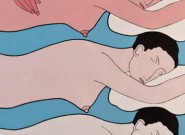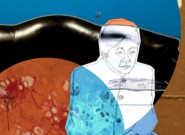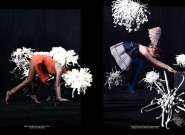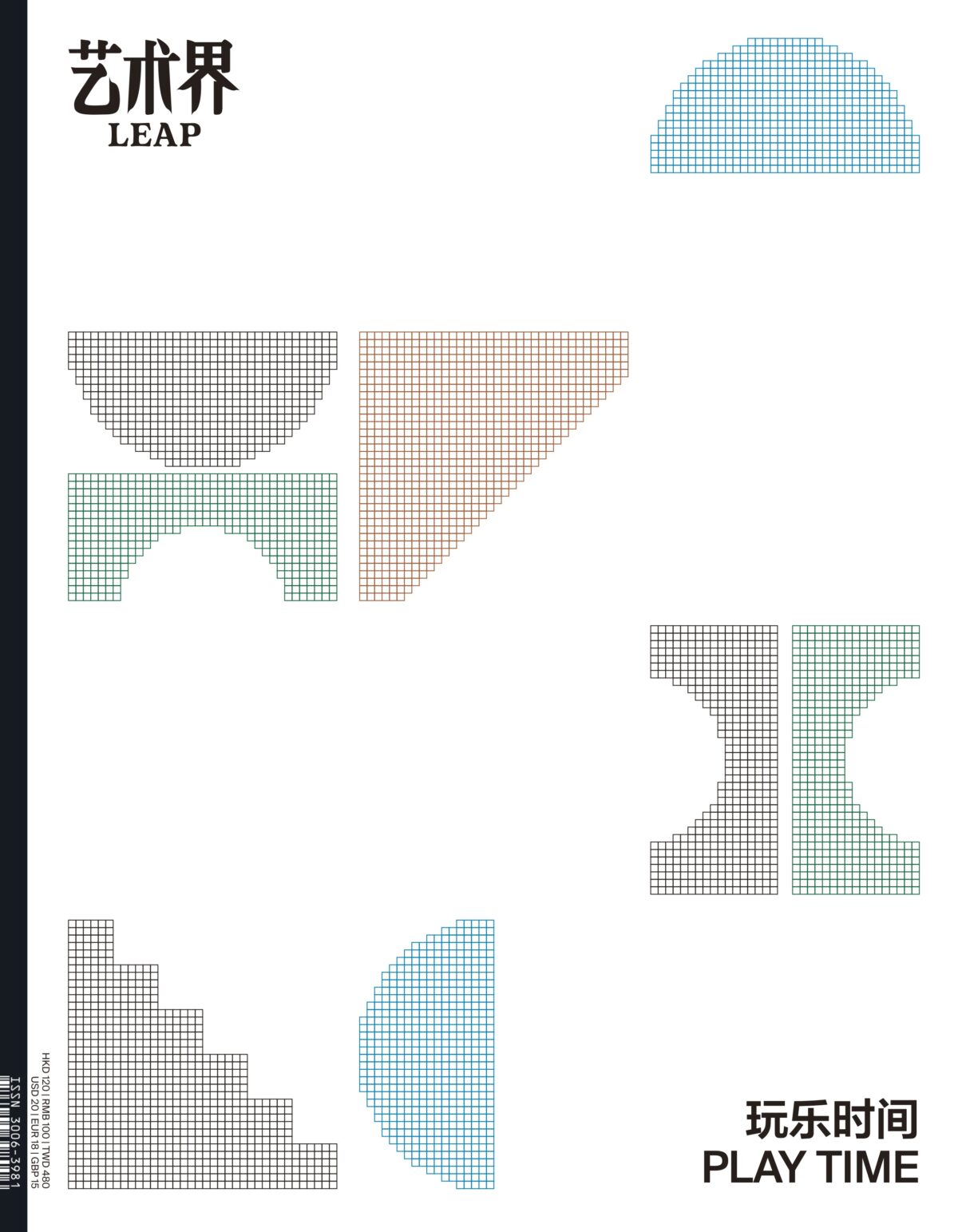Porcelain chips and fragments produced by kilns across hundreds of years accumulate in piles along the banks of the Chang River in Jingdezhen, creating a tableau akin to an archeological dig of a manufacturing site. These piles are washed, rinsed, and sometimes exposed by the rise and fall of the tides in a perpetual water…
Read MoreIn 2006, Hong Kong billionaire Joseph Lau purchased an Andy Warhol silkscreen portrait of Mao Zedong for USD 17.4 million at a Christie’s auction. The following year, the real estate tycoon acquired Paul Gauguin’s Te Poipoi for upwards of USD 39 million at a Sotheby’s auction. In 2010, a purportedly Chinese buyer took home Picasso’s…
Read MoreLu Lei’s works possess an intricacy of form beckoning association with the Baroque style; invocative of the sublime and the spiritual, they are as rich with imagination and movement as they are echoing with a sort of hallowed purity. In his newest solo exhibition “Floating Ice Biography,” Lu selects to utilize materials and ideas that…
Read MoreDOMAIN WHEN IN THE summer of 2010 Gao Shiming invited Wu Shanzhuan and Inga Svala Thorsdottir to design the logo for the China Academy of Arts’ then newly-established School of Inter Media Art, his hope was that the logo would have a narrative quality, and not the minimalist style popular today— something similar to more…
Read MoreLIU WENTAO, WANG GUANGLE: SPACE AND TIME LIU WENTAO My early works consisted of piling layers of pencil lines on paper, gradually producing a highly compressed surface. Like looking at a flat plane of water, at a surface that gives no clues as to its actual depth,…
Read MoreLAO ZHU: THE THIRD ABSTRACT The unforeseen emergence of abstract art in the modernism of late-1970s China can be attributed to two major factors. One is political, one artistic. First, the political: after the founding of new China in 1949, art policy labeled abstract expression as bourgeois; it…
Read MoreWhen composer John Cage performed the silent composition 4’33 in 1952, his idea was that silence was never silent, but a space filled with unintentional, musical sounds. Artist and musician Su-Mei Tse’s solo exhibition “Lapses of Time” evokes this notion in the treatment of the exhibition space, here divided into two rooms. Starting with the…
Read MoreFollowing on Zeng Fanzhi’s major exhibition of sculptures and mural-sized paintings at the Rockbund Art Museum in Shanghai last year (see review, LEAP 6), this tightly curated show at Gagosian’s Hong Kong space— the first there dedicated to a Chinese artist— possessed all the air of a retrospective. Collating Zeng Fanzhi’s “wide-ranging depictions of the…
Read MoreThe countdown to the opening of the solo exhibition has already begun, but Lin Tianmiao’s basement studio in Tongzhou, just east of Beijing proper, remains extremely quiet. Recently and nearly completed artworks render the huge space crowded, and the workers quietly attending to their tasks heighten the tension within the white walls. The moment of…
Read MoreAlthough the majority of the research that culminated in the “Little Movements” exhibition revolves around Chinese contemporary art, the three young researchers-cum-curators—Liu Ding, Carol Yinghua Lu, and Su Wei—do not attempt to uncover or define any so-called special Chinese characteristics in their subjects. Instead, they opt to adopt a global view of art events, a…
Read MoreFor its fifth installment, the Chengdu Biennale was transformed from a privately funded exhibition into a state-run cultural event. In the eyes of many, this example of “re-nationalization” hints at an official recognition of the value of events of this kind; to adopt the vocabulary of business marketing, the Chengdu Biennale as we know it…
Read MoreThe “Little Movements” research— launched by Liu Ding, Carol Yinghua Lu, and Su Wei— takes Wang Guangyi’s verbal recollection of the seminal 1986 Zhuhai Symposium as a case study. The researchers claim that the chief aim of “Little Movements” is to emphasize the self-construction of dominant trends within contemporary art. Using this stated aim as…
Read MorePerhaps, ten or twenty years from now, we will see the abstractionism of China today as something akin to American Abstract Expressionism. After the Second World War, the United States, through Abstract Expressionism, completely remolded traditional European expressionism and thereby affirmed its own status as a cultural center. In this sense, today’s Chinese abstraction serves…
Read MoreIn September 2011, the fourth Guangzhou Triennial opened as scheduled—amidst considerable doubt, followed by responses increasingly bleak in their disappointment. First in 2002 with Wu Hung’s conception for the first triennial—“Reinterpretation: A Decade of Experimental Chinese Art (1990-2000)”—next in 2005 with Hou Hanru’s “Beyond: An Extraordinary Space of Experimentation for Modernization”—and again with Wang Huangsheng…
Read MoreThe subtitle of the inaugural CAFAM Biennale, “Super-Organism,” is “Research and Experiment from a Specific View.” This “non-biennial,” established within a biennial framework, brings an abstract theme to a specific space through the arrangement of works and coordination of related activities; it also summarily seeks theoretical propulsion through texts including a catalog, a forum transcript,…
Read MoreShanghai has been a model region for the practice of abstract art in contemporary China. Over the past 10 years, amidst the overall pattern of Chinese contemporary art, abstract art has come to be one of Shanghai’s emblematic features, one of its stronger cultural calling cards. TRACING BACK IN HISTORY SINCE THE MING and Qing,…
Read MoreARTIST: Liu Ding PHOTOGRAPHY: Chai Lizeng MAKE-UP: Daniel Zhang (Tony Studio) HAIR: He Zhiguo (Tony Studio, Sebastian) STYLIST ASSISTANT: Chiu PRODUCER: Aimee Lin PRODUCTION ASSISTANT: Bian Jiaojiao MODEL: Anna
Read MoreFORGET ART IS an independent organization established in 2009 by the artist Ma Yongfeng. Doubling as a loosely defined creative collective, it came to notice after engineering the project “Location: Dragon Fountain Bathhouse” in September 2010. For this project, participating artists adopted a strategy of “microintervention”— launching artfully insinuated threats and acts of resistance against…
Read More“Abstract art” in China has reached a new high-water mark since its popularity during the ’85 New Wave. This revival can be recognized in the growing and increasingly active groups of young artists that practice abstraction in their works, with each developing in unique directions. Correspondingly, exhibitions on “abstraction” have grown in number— as have…
Read More























